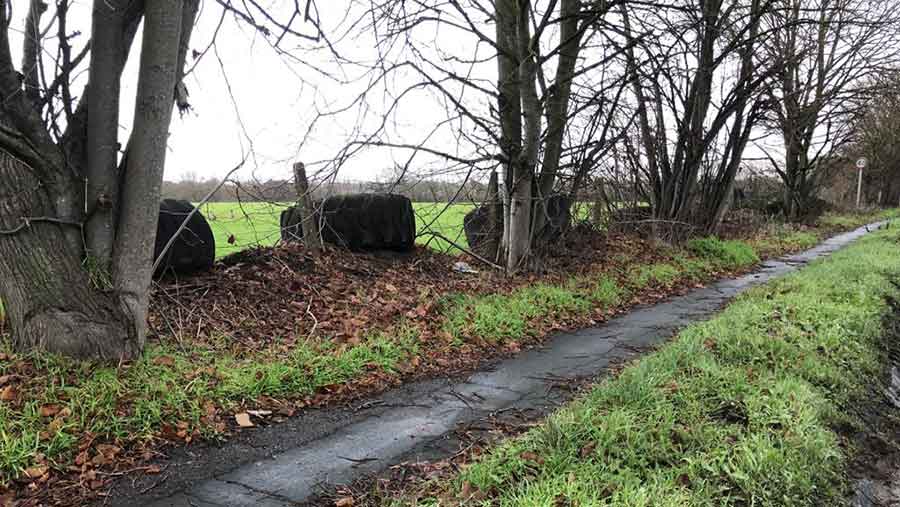Farmer left stunned by council ultimatum to remove concrete blocks
 © J Rayner & Sons
© J Rayner & Sons A Thames Valley farmer who is plagued by rural criminals is being threatened with prosecution by a council unless he removes concrete blocks and tyres from his land.
Colin Rayner, a director of J Rayner & Sons, says Buckinghamshire Council has given him until the end of this month to remove the tyres and concrete blocks from his land in Richings Park – or it will consider formal action.
Mr Rayner, who is the current chairman of the South Buckinghamshire NFU, says he is a constant victim of rural crime and suffers a crime a day on average.
See also: New taskforce to tackle rural crime in Thames Valley
But placing concrete blocks in front of gateways and old tractor tyres along the borders of his fields have helped him to keep out joyriders and poachers, and deter trespassers who set up illegal camps on his land.
Mr Rayner, whose family has been farming in Buckinghamshire since 1551, has written to the council’s planning head to ask him to explain why he believes placing concrete blocks in front of gateways is unlawful in planning terms.
“What can the thousands of farmers in Buckinghamshire do to protect their farms from the criminals if they have to remove all these concrete blocks?” he asked.

© J Rayner & Sons
Support
Mr Rayner says he has received the support of Joy Morrison, Conservative MP for Beaconsfield, Cllr Wendy Matthews, a South Buckinghamshire District Councillor for Iver and Richings Park and Inspector Stuart Hutchinson, of Thames Valley Police.
Buckinghamshire Council is threatening to issue a notice to Mr Rayner under section 215 of the Town and Country Planning Act 1990 if he fails to remove the concrete blocks and tyres by 31 January.
Peter Strachan, cabinet member for planning and regeneration at the council said it had received a complaint from a member of the public about tractor tyres being placed along the edge of a field bordering a highway.
“We have asked Mr Rayner to remove the tyres, which amounts to approximately 50 old use tyres placed along a stretch of approximately 250m,” he added. “While each planning case is different, as a council, we need to apply the planning rules in a consistent way across the whole county.
“Even if we don’t consider the visual impacts of this particular case, the council has raised concerns that allowing one farmer to use this method is likely to spread to other farmers across not only Buckinghamshire, but also the rest of the country.”
